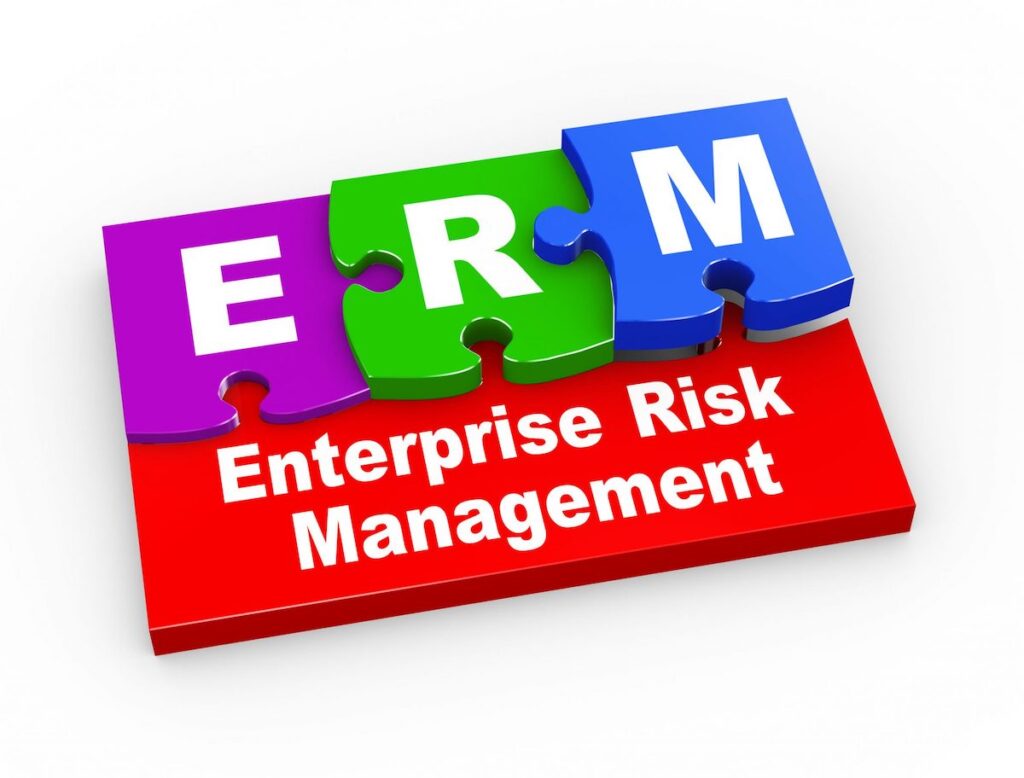
Status: Final Blueprint
Author: Shahab Al Yamin Chawdhury
Organization: Principal Architect & Consultant Group
Research Date: August 4, 2024
Location: Dhaka, Bangladesh
Version: 1.0
Part 1: The Strategic Imperative of ERM
Enterprise Risk Management (ERM) has evolved from a siloed, reactive function into a strategic, firm-wide discipline essential for value creation and protection in a volatile global landscape. A modern ERM program integrates risk considerations directly into strategic planning to enhance decision-making, improve organizational resilience, and enable the confident seizure of opportunities.
Foundational Frameworks:
Two primary frameworks guide ERM implementation:
- COSO ERM Framework: A control-based approach that integrates risk with strategy and performance. It is structured around five components (Governance & Culture, Strategy & Objective-Setting, Performance, Review & Revision, and Information & Reporting) and is widely adopted in the U.S., particularly by organizations focused on SOX compliance.
- ISO 31000 Standard: A flexible, principle-based guideline designed to embed risk-based thinking into all organizational activities. It is built on three pillars (Principles, Framework, and Process) and is highly adaptable for global organizations and those with existing ISO management systems.
Governance and Culture:
Effective ERM depends on a strong governance model, typically the Three Lines of Defense (1st Line: Operational Management, 2nd Line: Risk/Compliance Functions, 3rd Line: Internal Audit), and a deeply embedded, risk-aware culture. This requires clear leadership commitment, open communication, and well-defined roles and responsibilities, often clarified using a RACI matrix.
Part 2: Operationalizing the ERM Program
The execution of ERM follows a continuous, iterative lifecycle supported by key artifacts.
The ERM Lifecycle:
- Risk Identification: Building a comprehensive “risk universe” through workshops, interviews, and data analysis.
- Risk Analysis & Assessment: Evaluating risks based on likelihood, impact, and velocity using qualitative (heat maps) and quantitative techniques.
- Risk Response: Choosing a strategy for each significant risk: Avoid, Reduce (Mitigate), Share (Transfer), or Accept.
- Control Activities: Designing, implementing, and testing controls to execute the risk response.
- Monitoring & Continuous Improvement: Tracking KRIs, evaluating control effectiveness, and scanning for emerging threats.
Key Artifacts:
- Risk Taxonomy: A hierarchical classification of risks that provides a common language and forms the data architecture for ERM technology.
- Risk Register: The central repository for all identified risks, tracking their assessment, response, and status.
- Key Risk Indicators (KRIs): Forward-looking metrics that provide early warnings of changing risk exposures.
Part 3: Technology Enablers – ERM Platform Comparison
The ERM software market is rapidly growing, driven by regulatory complexity and the need for business resilience. The dominant trend is the integration of Artificial Intelligence (AI) to shift ERM from a reactive to a predictive discipline.
Leading Platform Philosophies & Strengths:
| Platform | Core Philosophy & Strength | Ideal Enterprise Profile |
| MetricStream | AI-First Connected GRC: A purpose-built, integrated cloud platform to unify all GRC functions with a strong focus on AI-driven automation. | GRC-Focused & Cloud-Forward: Seeking a modern, holistic GRC platform to streamline risk, compliance, and audit. |
| IBM OpenPages | Cognitive & AI-Driven GRC: Leverages the power of IBM Watson for advanced NLP and predictive analytics on unstructured data. | AI & Data-Driven: In regulated, data-intensive industries (e.g., finance) needing deep data analysis and deployment flexibility. |
| Archer Suite | Flexible & Mature IRM: A highly configurable and mature platform that can be tailored to an organization’s unique and complex processes. | Process-Mature & Highly-Tailored: Has well-defined ERM processes and requires a powerful, flexible, dedicated IRM solution. |
| ServiceNow | Integrated Platform-as-a-Service (PaaS): Manages risk on the same core platform where work happens, enabling native integration with ITSM, CMDB, etc. | Platform-Centric: Already heavily invested in the ServiceNow ecosystem and values seamless, real-time IT/operational risk management. |
High-Level Capability Comparison (Rated 1-5):
| Capability Area | MetricStream | IBM OpenPages | Archer | ServiceNow |
| On-Premise Deployment | 4 | 5 | 5 | 1 |
| Risk & Control Management | 5 | 5 | 5 | 4 |
| Regulatory Content Integration | 4 | 5 | 4 | 3 |
| Integration & API Capabilities | 4 | 4 | 4 | 5 |
| Customization & Flexibility | 4 | 4 | 5 | 5 |
| AI & ML Capabilities | 4 | 5 | 4 | 4 |
| Reporting & Dashboards | 4 | 5 | 4 | 5 |
| Workflow Automation | 4 | 4 | 4 | 5 |
Part 4: Strategic Recommendations
The optimal ERM platform choice is not universal; it must align with the organization’s specific context, maturity, and strategic goals.
- ServiceNow is the logical choice for organizations already embedded in its ecosystem.
- IBM OpenPages excels for data-intensive, regulated firms needing top-tier AI and deployment flexibility.
- Archer is ideal for mature organizations requiring deep process customization.
- MetricStream is a strong contender for those seeking a modern, cloud-native, all-in-one GRC solution.
Successful implementation requires a phased rollout, strong executive sponsorship, and a dedicated change management effort to foster a risk-aware culture. The future of ERM lies in predictive intelligence and integrated resilience, transforming it from a defensive necessity into a strategic advantage.
Chat for Professional Consultancy Services
